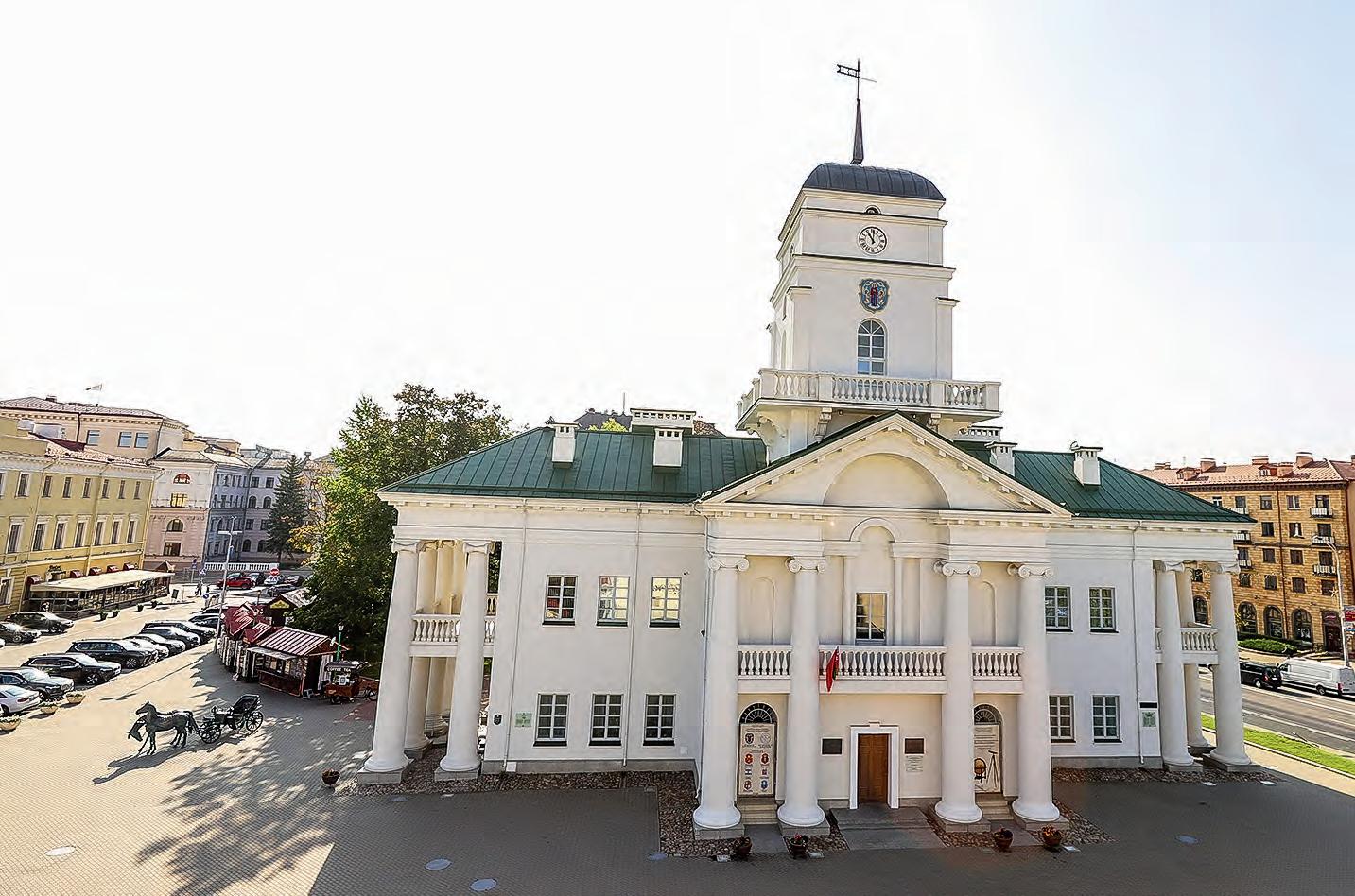
4 minute read
Big life of a small town
Belarus is a country of small towns. One and a half hundred urban settlements out of two hundred existing have less than twenty thousand inhabitants. Each town has its own history, unique appearance, special destiny. Some of them, such as Turov, Zaslavl or Kamenets, count their biography from the times of Kievan Rus. Others — Novolukoml, Beloozersk, Kostyukovka, formed on the basis of industrial and energy enterprises, are not yet a century old.
Today, small towns are home to about three million people. The well-being of almost a third of the country’s population depends on the economic, social and cultural well-being of these settlements. It is no coincidence that the development of small and medium settlements in Belarus has been declared a top priority. At one time, it was enshrined in the State Comprehensive Program for the Development of Regions, Small and Medium Settlements. The program covered 187 settlements. The implementation of thousands of investment projects (including two hundred of the most important), the creation of tens of thousands of jobs, the reduction of the unemployment rate — the measures enshrined in the Presidential Decree should significantly improve the quality of life in small towns and unleash their economic potential.
Advertisement
Yes, a big city has great opportunities, a small city has little. Residents of large cities — Minsk, regional centers — have always been in more favorable conditions compared to the owners of registration in towns or regional center. Not only in terms of access to theaters or libraries, but above all in terms of earning opportunities and job search. Not all city-forming enterprises, which were the main breadwinners of the province’s residents during the planned economy, were able to adapt to market conditions. Many plants and factories have reduced production volumes, and some have closed. Life in some settlements began to fade… Residents of the village of Elizovo, Osipovichi district, are well aware of such realities. Twenty years ago, the oldest glass factory in the country, where most of the local population worked, stopped. There was no other work here. Everything changed when an investor came to the company. Large funds were immediately invested in the modernization of the plant. Old machines have been replaced by modern equipment from European firms. Today, the enterprise produces dozens of types of glass bottles and jars of various shapes, containers, colors. The plant not only fully meets the needs of the domestic market for
glass containers, but also sends it abroad. The employees are paid decent wages. It is noteworthy that with the revival of the enterprise, the village has also changed, in the improvement of which substantial funds are also invested annually. If at the beginning of the 90s about a hundred apartments and houses were empty in Elizovo, then with the revival of the plant, residents of neighboring villages and even townspeople bought up free housing.
How to interest capital in moving from the capital to a province in dire need of creating new competitive industries? The stimulus was a decree signed by the President that provided benefits for doing business in small towns. For example, commercial organizations created in settlements with a population of up to 50 thousand people are exempt from income tax and some other fees for 5 years from the date of foundation. When importing technological equipment intended to contribute to the statutory funds of organizations with foreign investments, entrepreneurs are also exempt from value added tax and customs duties.
The results were not long in coming. Investments in fixed assets in small and medium settlements have significantly exceeded the planned volumes over a certain period of time. Thousands of jobs have been created. Industrial production in province has increased markedly. New lease of life has begun in the Belarusian province.
Although the global financial and economic crisis influenced the development of the national economy, small towns as a whole showed good dynamics. The growth rates of industrial and consumer goods production there are higher than the national average. Investments in fixed assets gave a quick effect.
New industries, modern technologies, competitive products, decent wages — everything that was previously only dreamed of in the province is now becoming a reality. Small towns are gradually turning into comfortable places of residence for a person, where he has a job, housing, social facilities and, unlike the capital, clean air and there is no transport problem. In addition, it is their potential that can become the engine of economic development throughout the country. For example, located 30 kilometers from Minsk, the Dzerzhinsky district, on the territory of which there are three settlements that were included in the program — Dzerzhinsk, Fanipol and Negoreloe — have been living without subsidies for several years. This was facilitated by an active inflow of investments and the creation of new industries. In Fanipol alone, about three dozen new enterprises were registered in about two years. Most are industrial.
The dynamic development of the economy has changed the regional center itself. Taxes that are deducted for the development of a small town are accumulated in a separate account. This money is quickly invested in the development of the settlement.
In short, there is factual confirmation that the foundation of a strong Belarus, the creation of which was declared the main goal of state policy, is indeed dynamically developing regions. By Vasily Kharitonov
BELTA

Modern production at a glass factory in Elizovo village
OSH.BY

Dzerzhinsk expands its borders through new construction
SELL-OFF.LIVEJOURNAL.COM

These beautiful cars are produced at the factory in Fanipol
AN7.BY

Ancient Zaslavl takes good care of their monuments










